Alright – so today we’ve got the honor of introducing you to Morgan Stinson. We think you’ll enjoy our conversation, we’ve shared it below.
Morgan, looking forward to hearing all of your stories today. How do you feel about asking friends and family to support your business? What’s appropriate, what’s not? Where do you draw the line?
When I first started out exhibiting my work in group shows in San Diego, I think many of my friends and family wanted to support and even purchase their own pieces, whether my work truly spoke to them or not. I’ve always appreciated the support I’ve received, and I’m really honored that so many of my pieces have found homes with my loved ones and not just strangers or collectors. Even small batches of earrings I’ve made have adorned my loved ones’ ears and even those of folks I’ve never met. It’s pretty trippy to think that my brain vomit is appreciated in that way.
Asking for support has always felt somewhat desperate, and with the social media algorithms changing constantly, with a focus on short video format, I’ve felt that work like mine tends to get lost in the shuffle. Sharing my work on social media feels like shouting into the void sometimes, but I know there are a few fans of mine who hear those shouts and try to amplify them. Again, I’m very grateful, and I’m trying to take that same energy and put it into more tangible connections and marketing of my work in the real world. I’ve been incredibly lucky to meet so many other talented folks since moving from the West Coast, especially musicians, who have shown me how much success an artist can gain from a DIY approach.
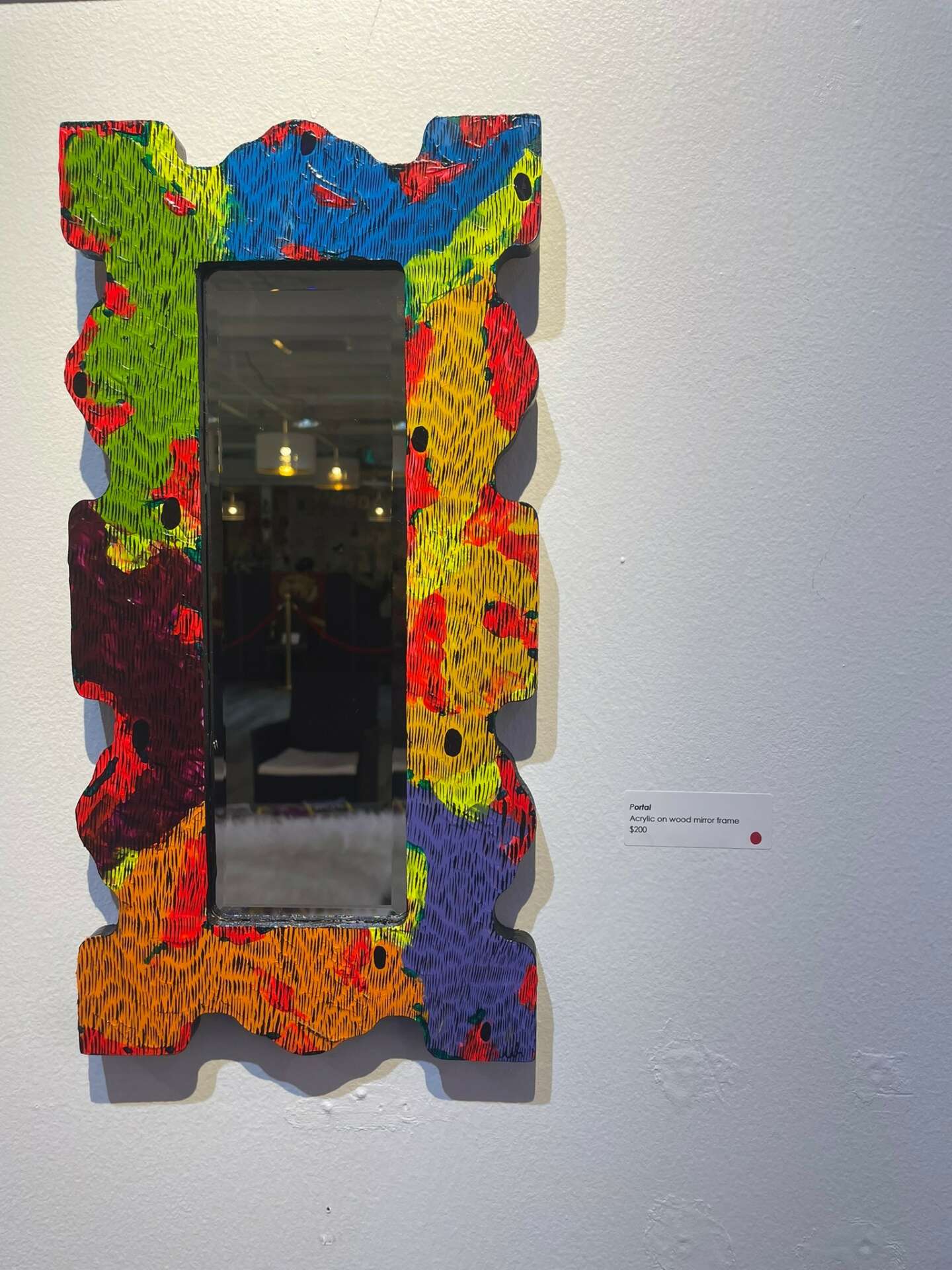
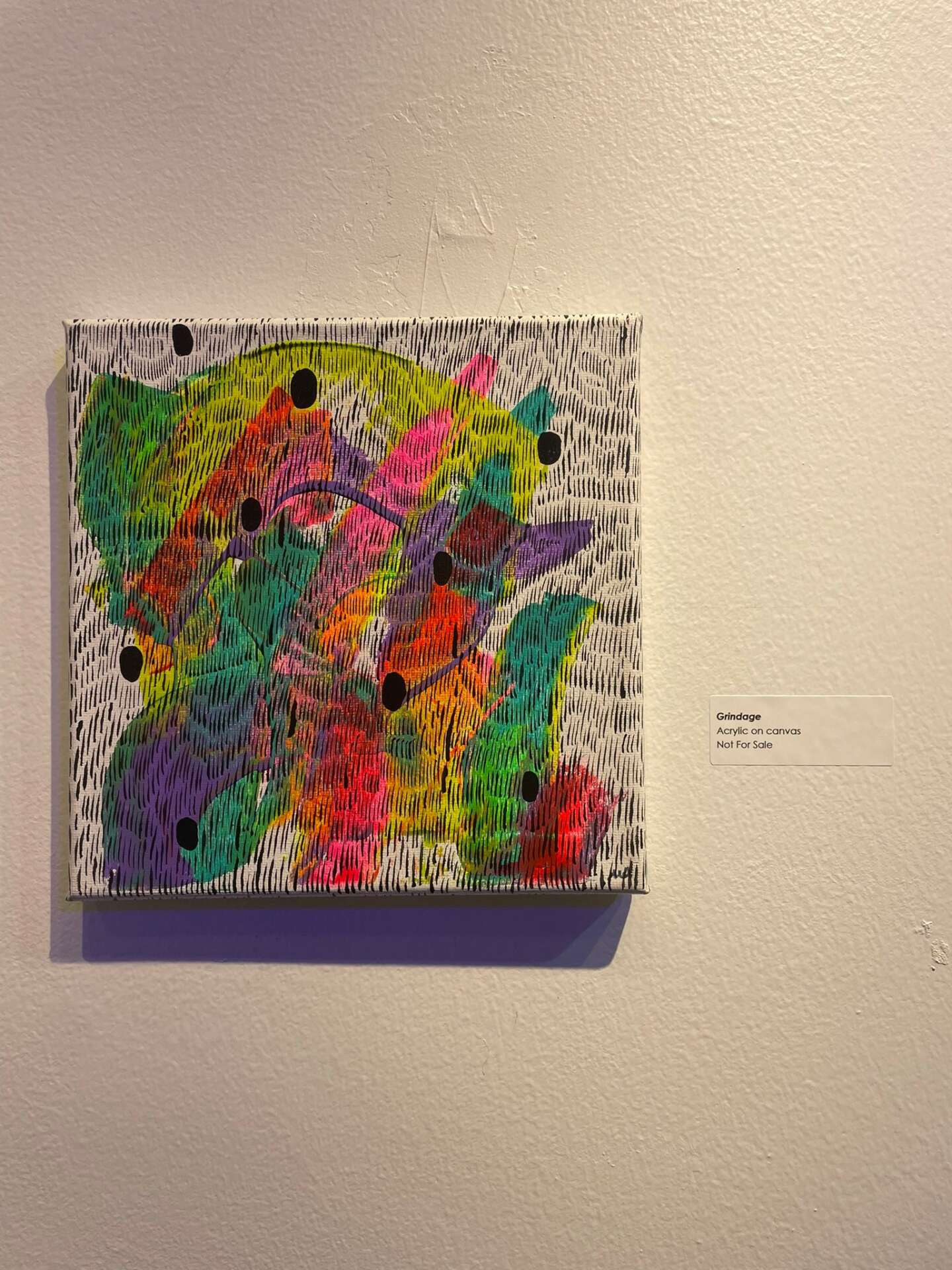
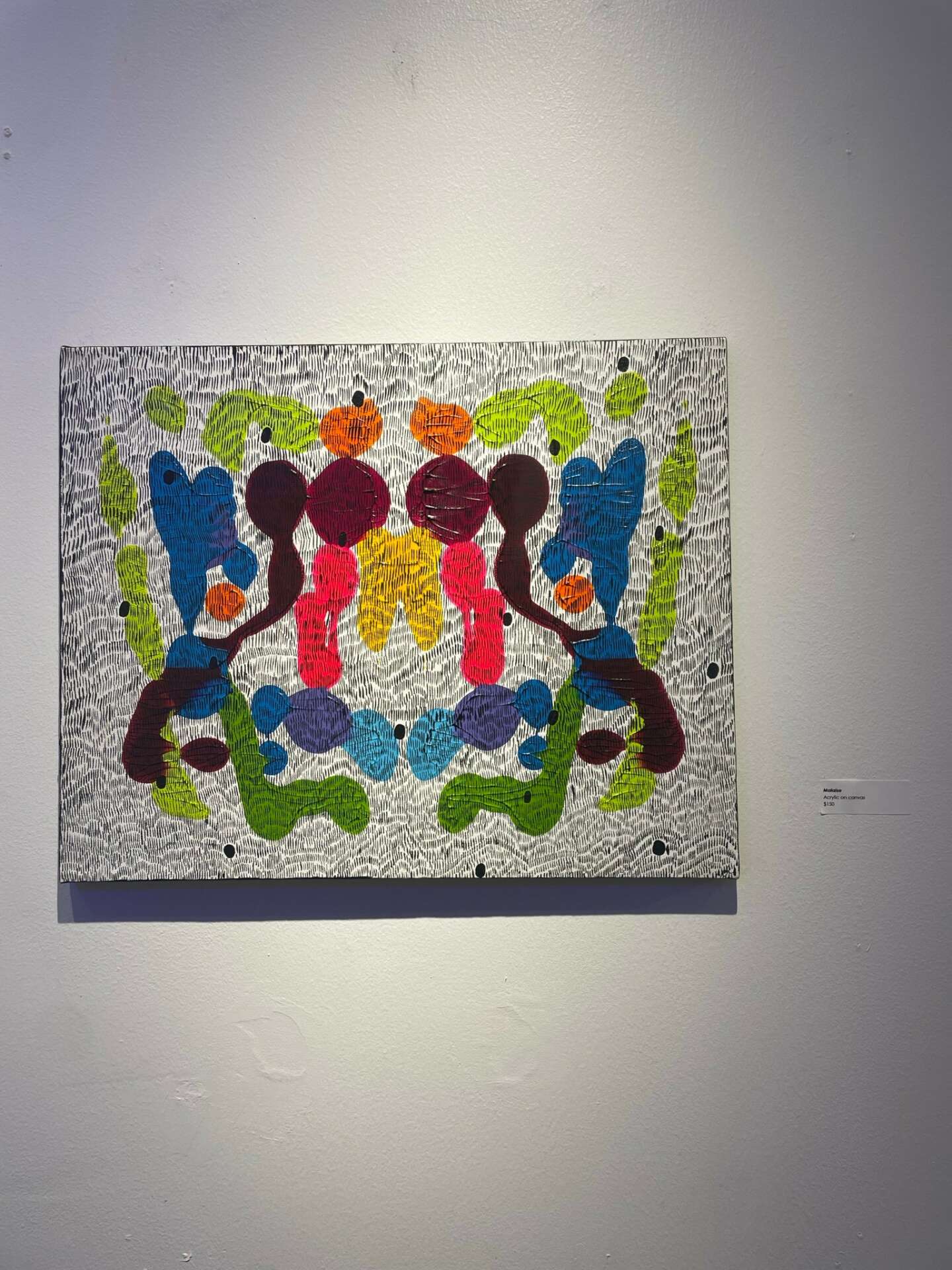
Awesome – so before we get into the rest of our questions, can you briefly introduce yourself to our readers.
Originally from San Diego, I was a fairly creative kid, though I didn’t pursue art academically or professionally until my early twenties. In the Spring of 2017 I participated in a Wes Anderson/Quentin Tarantino fan art show hosted by Thumbprint Gallery in San Diego, as well as their “Stranger Things” fan art show a few months later, experimenting with mediums and methods that didn’t quite feel right to me, they felt forced. Eventually, I began leaning into abstraction, painting a few pieces just for the hell of it, and then my “psycho art” (as my Mom likes to call it) came out to play. I realized that finger-painting to blend colors felt more visceral and personal to me than simply using a paintbrush, but then I thought I needed to add some extra “detail,” and that’s where the hash marks came in. Painting the hash marks in black over the psychedelic tapestry of the canvas felt meditative, almost cathartic for me. It wasn’t until recently that I considered using colors other than black for this detail. Upon appreciating one of my pieces, my best friend’s dad suggested I give impasto a try, and since then, I’ve been adding more texture to my work as well. I even did a series of Rorschachs, something I’ve always been mildly fascinated by in the field of Psychology. It’s been interesting discovering what people see when they look at mine; art is subjective after all.
Obviously psychology plays a huge role in my work, as I’ve received treatment for major depressive disorder and general anxiety. My brain vomits forth onto the canvas in an urgent way; I’ve considered my art practice a meditative approach to self-love and acceptance, which I think we’ve all struggled with at some point or another. There’s a lot of insecurity and self-loathing I’ve painted through, but I’ve painted just as much joy and bliss as well, if not more.
I still feel that I’m in the “emerging artist” phase of my career, as I feel like I’m still playing around with what my methods really are for sharing my colorful craziness with the world. I’ve been very lucky to exhibit my work in San Diego, Los Angeles, and most recently in Towson, MD for my first solo exhibition “You Schmooze, You Lose”. One of many more, I hope.
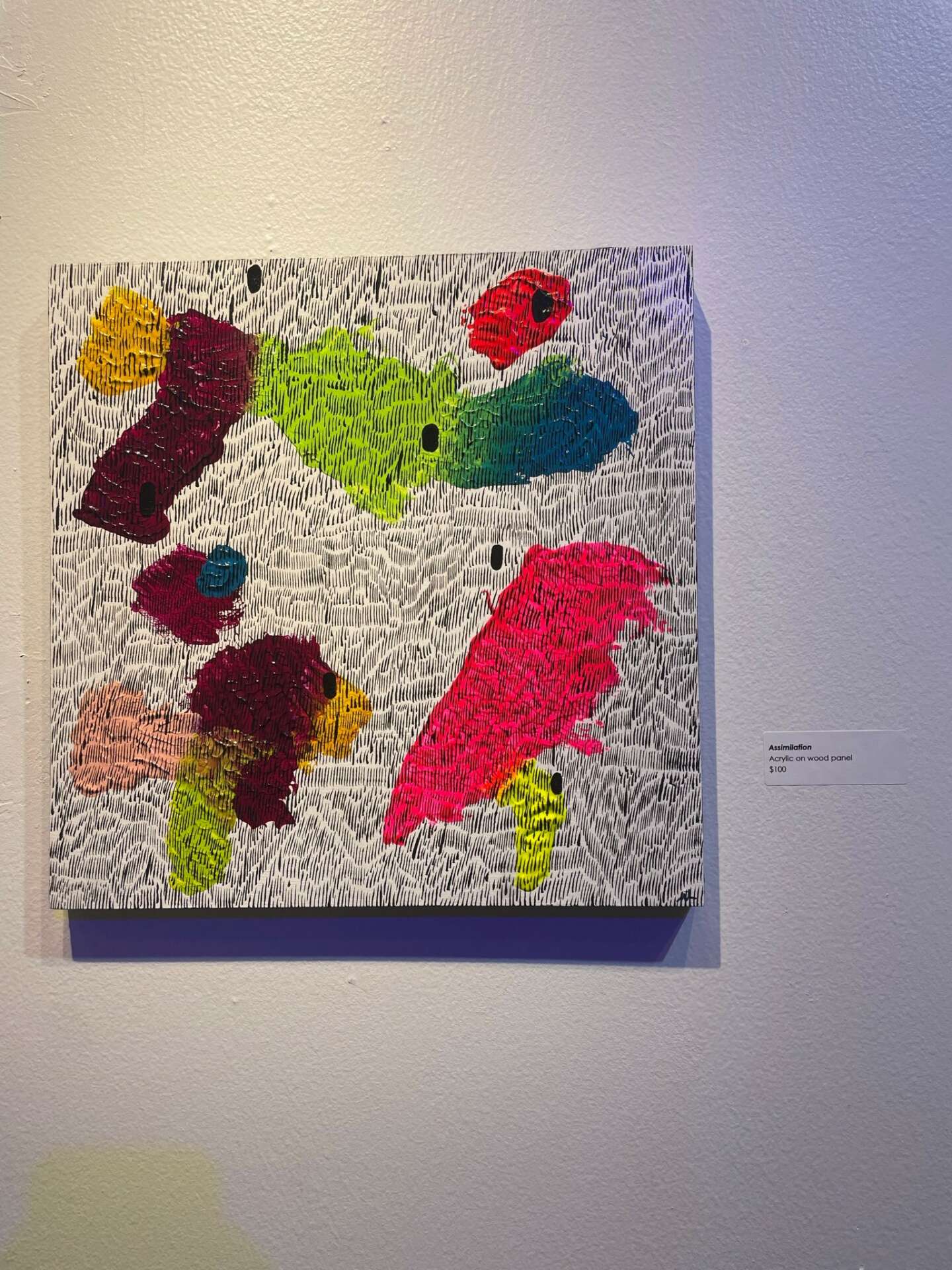
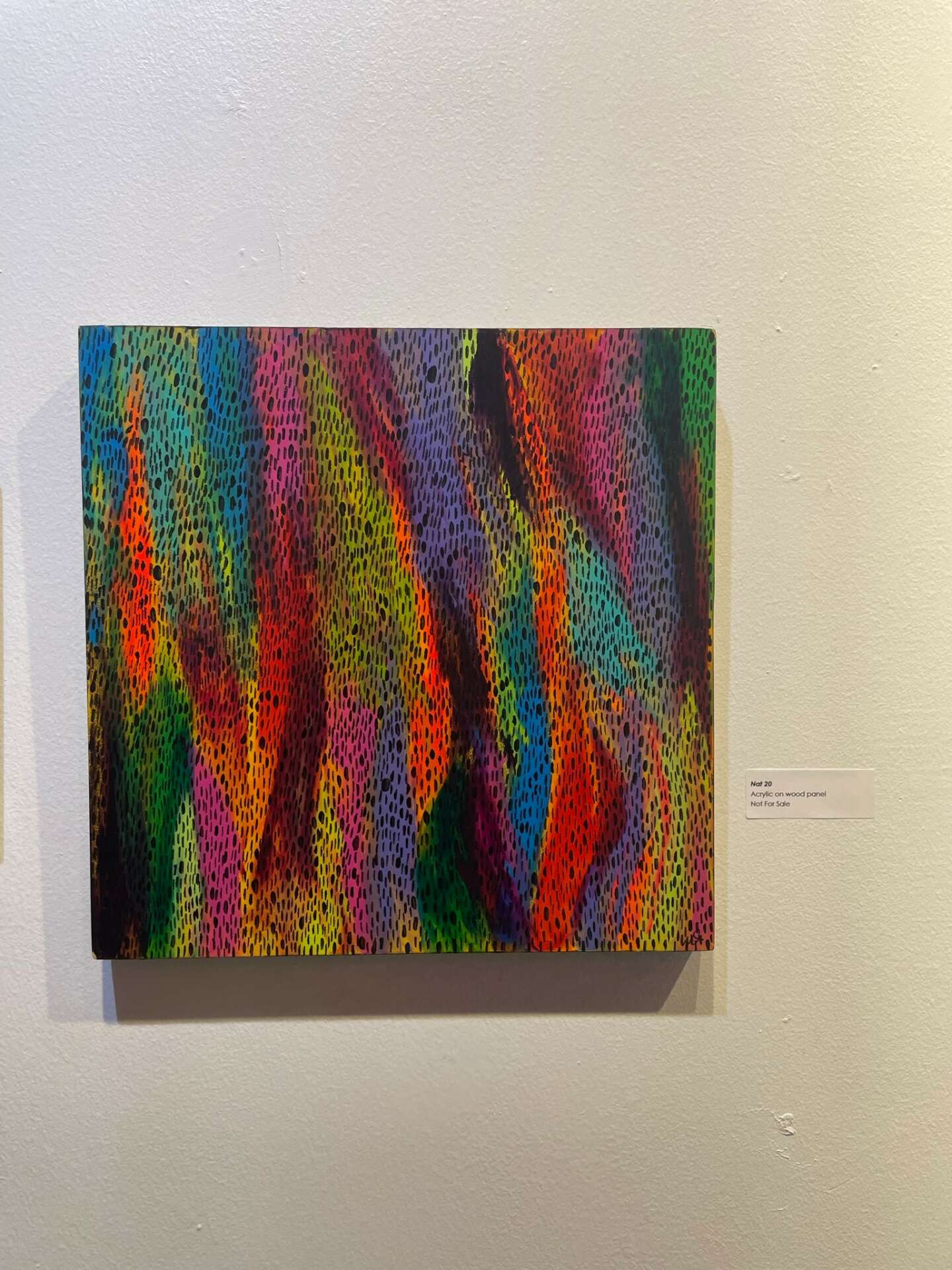
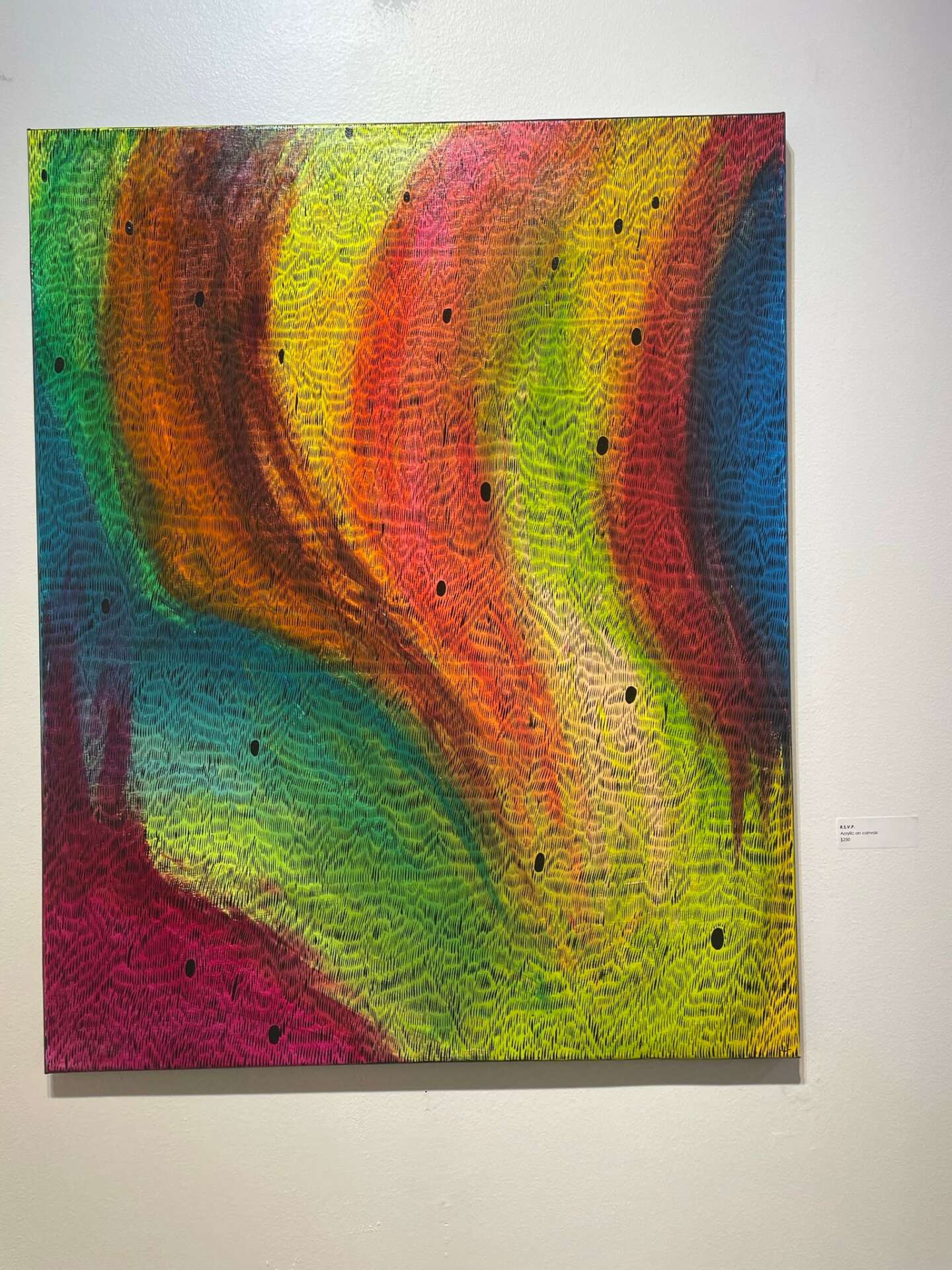
What do you find most rewarding about being a creative?
I don’t think hobbies or passions were truly appreciated until the pandemic, when folks were stuck at home and forced to do something, anything other than binge-watch and doom scroll. Friends of mine baked bread, began gardening, knitting, crocheting…becoming grannies I guess? I kid, but the point is that people close to me were actively doing things instead of consuming. I’ve been creating as a way to avoid (and contend with) consumption for years now, though during the pandemic I felt stunted and unsure what to put to canvas. Gratefully, that painter’s block passed and some of my best work has been made as a result of my time in pandemic isolation.
To answer your question though, I think the act of creating something out of the chaos of my mind is a reward within itself; while I can’t necessarily draw or paint realistically, I can use abstraction to my advantage to establish a scene of contentment, frustration, adoration, etc. The only limits are those I impose on myself, as my capabilities can always be improved upon – I’m mostly self-taught aside from what I learned in my high school art class (shout out to Jeff Robin at High Tech High). I can express myself in a way that is purely unique to me, and there’s something truly magnificent in that. Sure, anyone can paint, but no one can paint like me. It’s like my fingerprint, my spiritual fingerprint if you will.
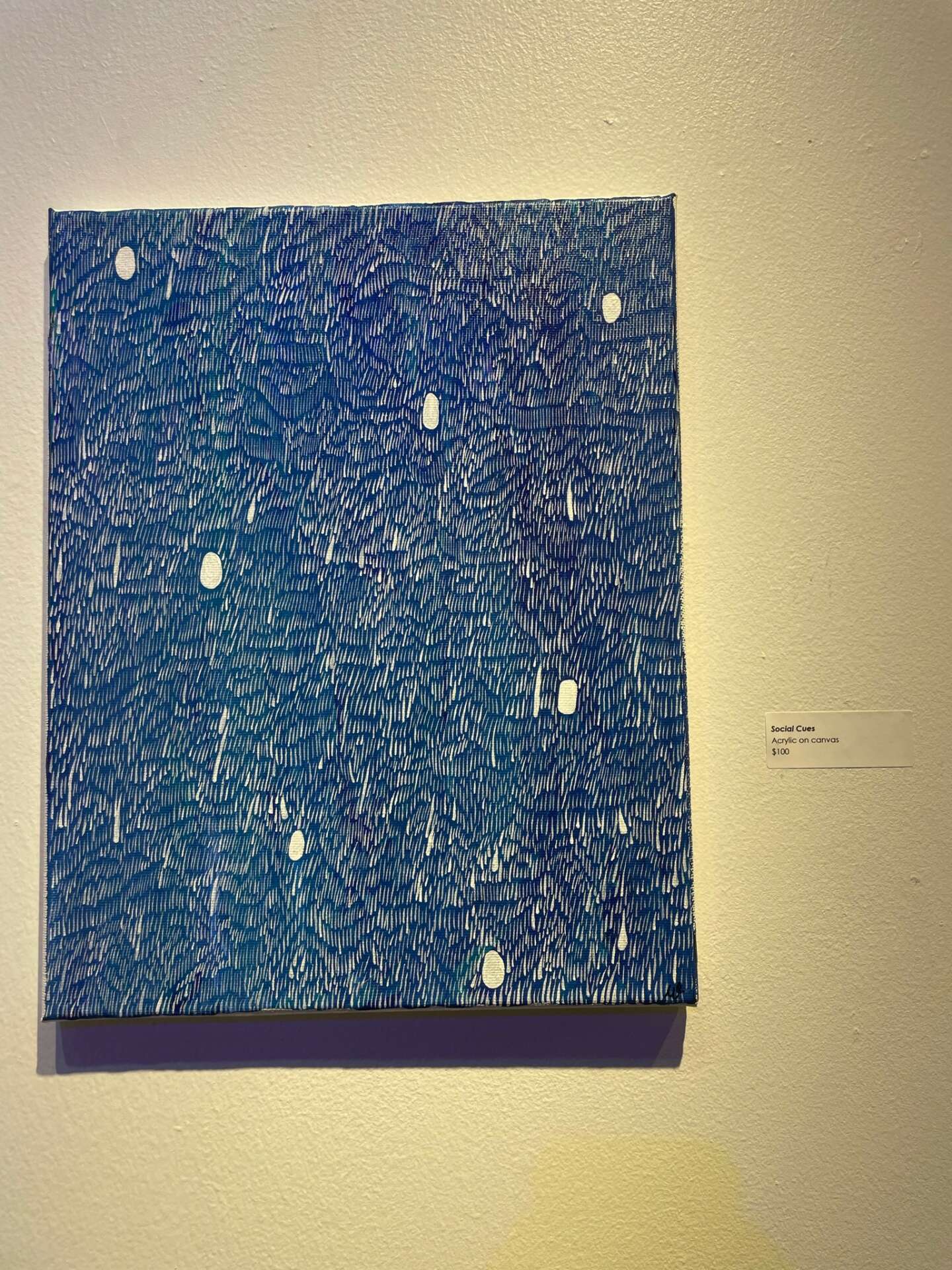
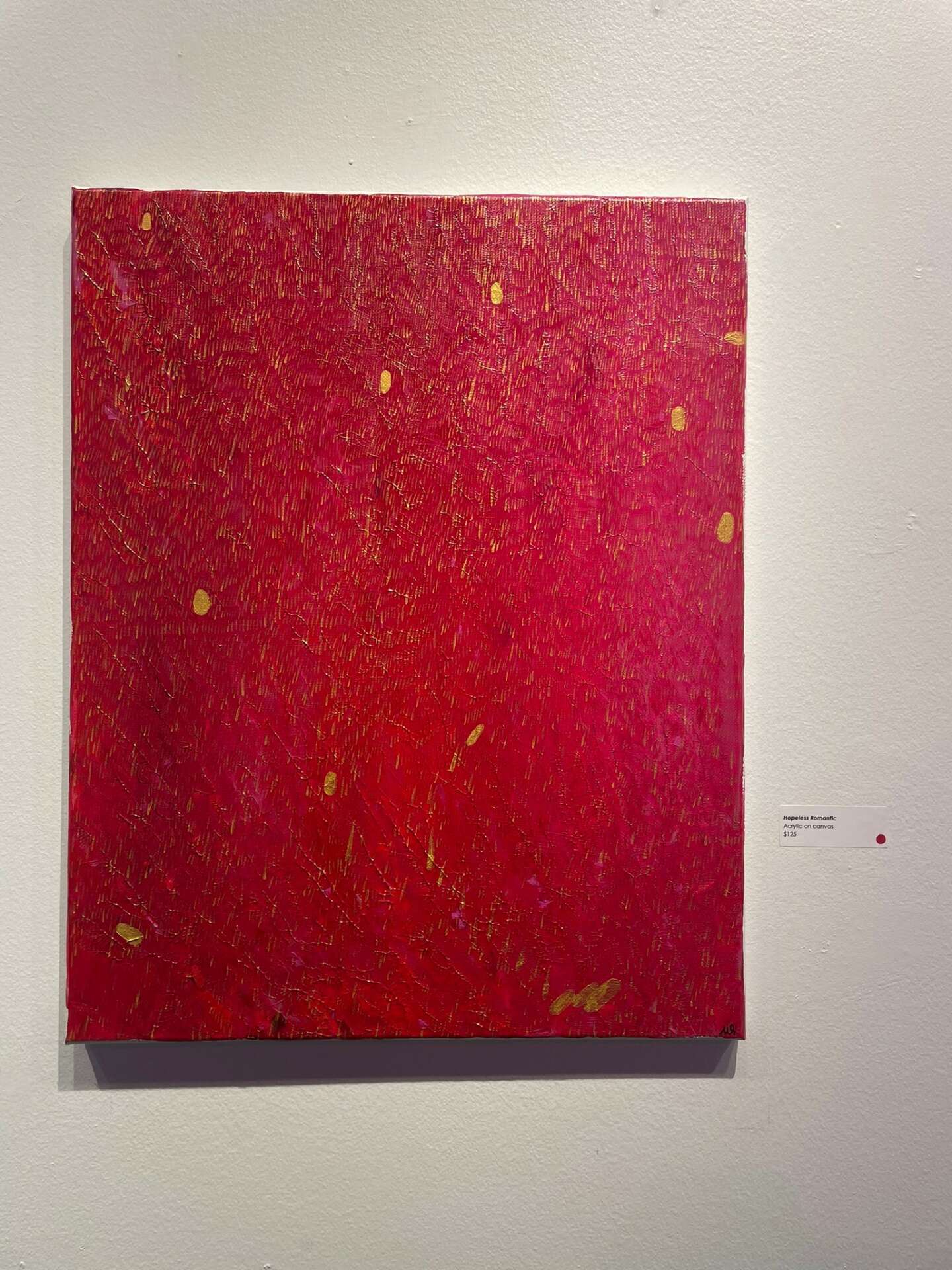
Is there something you think non-creatives will struggle to understand about your journey as a creative?
I don’t actually believe in the term “non-creative”. While there may be those who choose not to pursue a creative profession, hobby, or craft, everyone has creative tendencies. My father is an excellent cartoonist, my mother has an innate talent for refurbishing furniture, my step-father is a tinkerer, my paternal Grandmother has the greenest thumb I’ve ever seen, and my brothers have both played music, one a guitarist (briefly), the other a rapper (who can also paint). My best friend is a handywoman and self-taught mechanic while my partner is a passionate and talented songwriter and musician. Creativity comes in many shapes and sizes, and I think we’re selling ourselves short by using terms that negate the inherent creative traits we all have, whether we use them regularly or not. Even those who don’t nurture their creativity still have it, and there are some folks who are bursting with so much of it that they spin many plates or have their hands in many pots. I respect and admire those with creativity who choose to harness it in ways that may not be deemed “creative” at all. Again, I think it’s a matter of changing the narrative into one that appreciates all forms of creativity, not just those that can be put in a museum or gallery.
Contact Info:
Image Credits
Personal Photo: Travis Stone Other Images: Morgan Stinson


